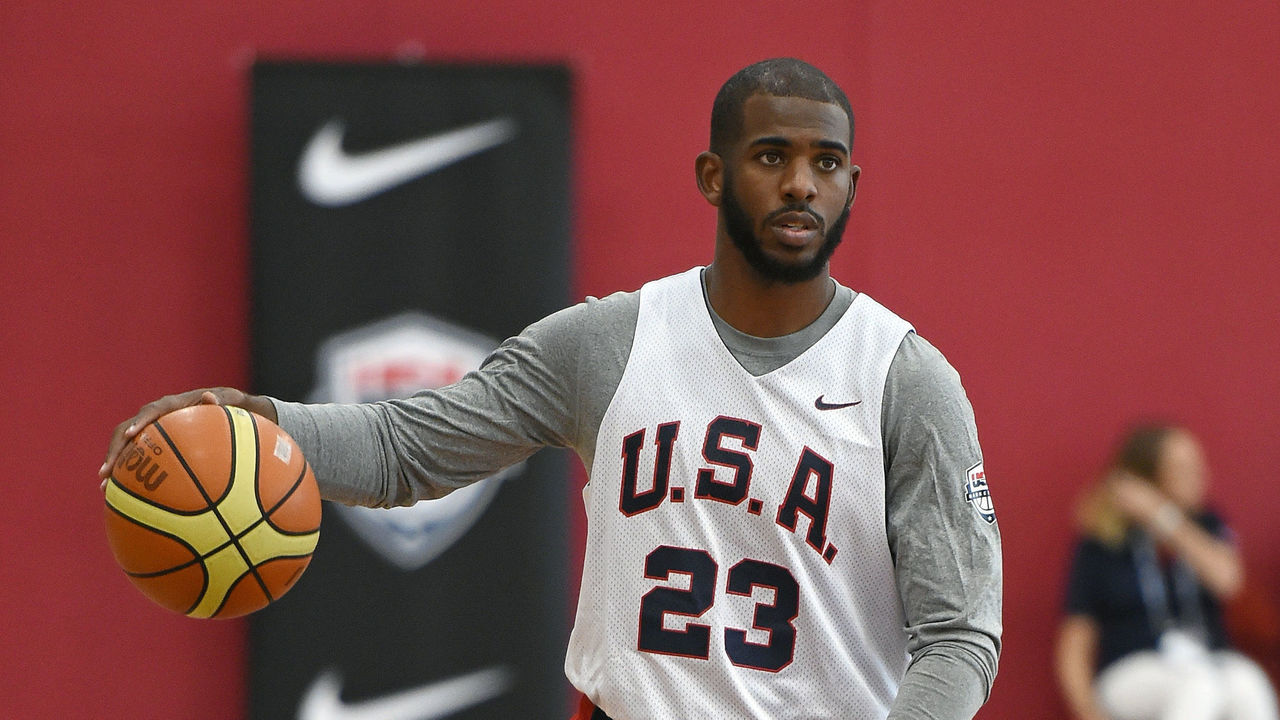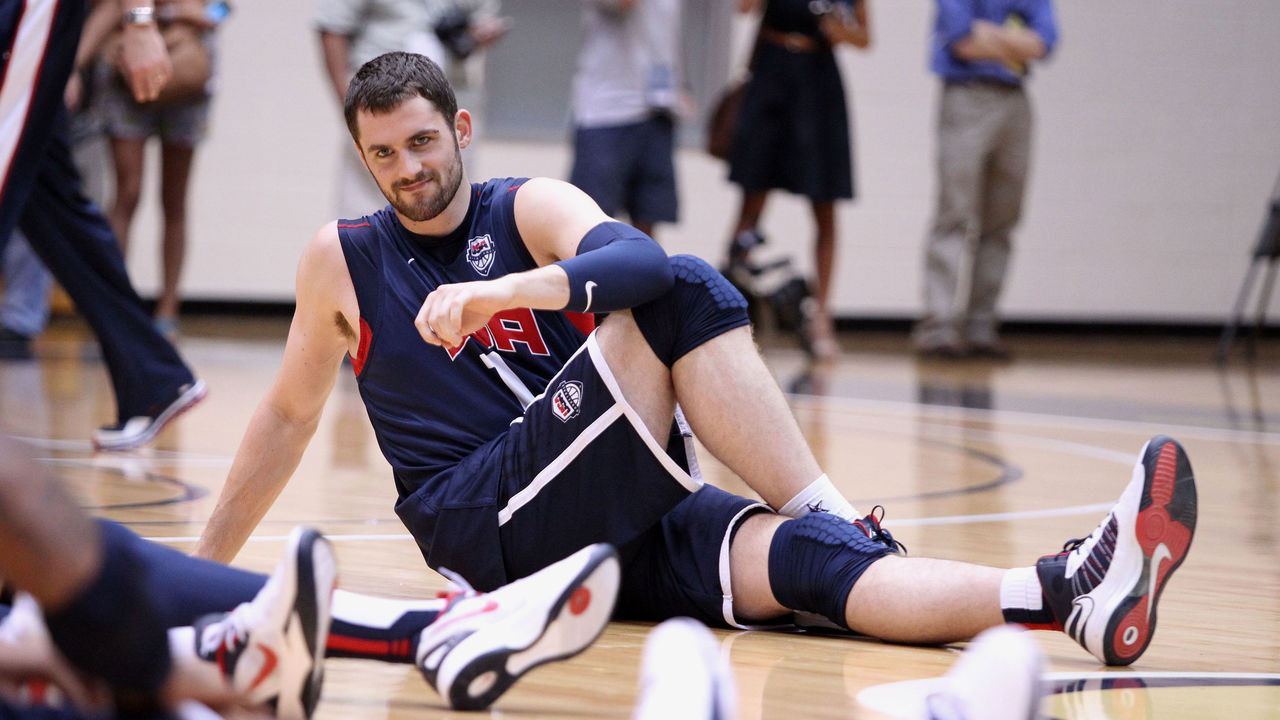Forecasting USA Basketball's 2021 'B team'
The best-laid plans often go awry. Look no further than the squad USA Basketball sent to China last summer to compete at the FIBA Basketball World Cup.
After a litany of big-name talents withdrew from consideration, the world's preeminent hoops powerhouse fielded a decidedly underwhelming roster - and then finished disastrously in seventh place. It was the first time since the 2002 World Championship that the senior men's team failed to reach the podium at a major international tournament.
Yesterday, we released a realistic projection of what an ideal Team USA roster could look like at the Tokyo Olympics, which will now take place in 2021. But with the memory of 2019 in mind, let's also examine how the roster might come together if USA Basketball's worst fears are realized and top players again pull out.
Let's call it the "B Team."

Point guards: Chris Paul, Trae Young
Paul will be 36 years old in the summer of 2021, and while that begs questions, his strong play for the Oklahoma City Thunder in 2019-20 showed he still has gas left in the tank. CP3 has suited up for his country in two prior Olympics - 2008 and 2012 - and while he's been out of the national team for nearly a decade, he'd provide a steady veteran hand this time around.
At the other end of the age spectrum is Young, who will still be only 22 next summer. While the point guard was not on USA Basketball's initial 44-man roster for the 2019-20 cycle, he's since emerged as a star in the making. It doesn't hurt his chances that his current Atlanta Hawks head coach, Lloyd Pierce, is serving as an assistant coach on Greg Popovich's Team USA staff.

Wings: Devin Booker, Jaylen Brown, Jimmy Butler, Joe Harris, Donovan Mitchell
Each of these wings would have a clearly defined role on this team.
Booker would give the Americans a lights-out shooter. Through five seasons with the Phoenix Suns, the All-Star has shot 35.5% on 5.5 threes per game. Meanwhile, FIBA's 3-point line is closer than the NBA's, which should only aid his outside touch.
Butler and Brown are strong two-way swingmen. Their defensive tenacity and versatility could prove crucial against countries that only boast one or two elite offensive talents (the norm for most top nations beyond the U.S.). Picture a hypothetical game versus Slovenia, which could feature Dallas Mavericks star Luka Doncic but not a whole lot else.
The 6-foot-1 Mitchell can play off the ball as a slightly undersized shooting guard thanks to his career 35.5% accuracy on threes, but he can also run the point in a pinch. The Utah Jazz All-Star was one of the breakout performers for the United States at last summer's FIBA tournament, and that previous commitment to the national team should give him an edge if a roster spot comes down to him or a similarly skilled combo guard.
Harris also played for the ill-fated 2019 U.S. squad. The Brooklyn Nets sharp-shooter does not exactly rank high in terms of celebrity status, but having a career 42.3% 3-point shooter on the end of the bench would be a luxury for any team in case of a floor-spacing emergency.

Frontcourt: Andre Drummond, Montrezl Harrell, Brandon Ingram, Kevin Love, Myles Turner
OK, maybe the idea of having two (current) Cleveland Cavaliers big men seems out there. But Drummond and Love were both on the initial 44-man roster before dropping out of last summer's FIBA World Cup. Plus, Popovich values traditional centers, making Drummond a realistic candidate.
Both players also have a history with the U.S. national team. Love suited up at the 2010 World Championship and played a significant role on the 2012 Olympic team. Drummond was a reserve for the 2014 World Championship squad.
Love would provide stretchability at the four- or five-spots. Ditto with Turner, a rare big man who boasts 35.4% shooting from long range and has averaged over two blocks per game for his career.
Ingram has been a legitimate Most Improved Player candidate in 2019-20, possessing the length to play stretch-four and the combination of shooting and off-the-dribble scoring to slot in at small forward in larger lineups.
Harrell is the sort of high-energy guy who could be plugged into the back of this roster.

With these 12 names in mind, here's how the team's rotation could look:
| Position | Starter | Reserve 1 | Reserve 2 |
|---|---|---|---|
| Point Guard | Chris Paul | Trae Young | |
| Wing | Devin Booker | Donovan Mitchell | Joe Harris |
| Wing | Jimmy Butler | Jaylen Brown | |
| Frontcourt | Kevin Love | Brandon Ingram | Montrezl Harrell |
| Frontcourt | Andre Drummond | Myles Turner |
There are also two things worth pointing out at this point in the exercise.
For one, the Olympics boast a level of prestige far above that of the FIBA World Cup (formerly known as the World Championship). While USA Basketball was forced to trot out its "C Team" for last summer's event, it's highly unlikely we'll see anything of that sort during an Olympic tournament.
Even if a few big names pull out due to injury, age, or load management, the Americans will likely still feature at least 10 of the top 50 or so players in the world when the Olympics commence.
That brings us to the final - and perhaps most important - point. Even USA Basketball's "B Team" is stacked beyond measure. Take the likes of LeBron James, Stephen Curry, James Harden, and Anthony Davis off the table, and the U.S. would still be favored to win its fourth straight Olympic gold - and its 16th gold overall since the sport was added to the games in 1936.
HEADLINES
- Wemby sparks Spurs in return to book spot in NBA Cup final
- Magic's Suggs to undergo tests after suffering hip injury vs. Knicks
- Brown states MVP case for Brunson: 'He makes the game easier for everybody'
- McDavid has 2 goals, assist to back Jarry in Oilers' win over Leafs
- Brunson's 40-point night lifts Knicks to NBA Cup final